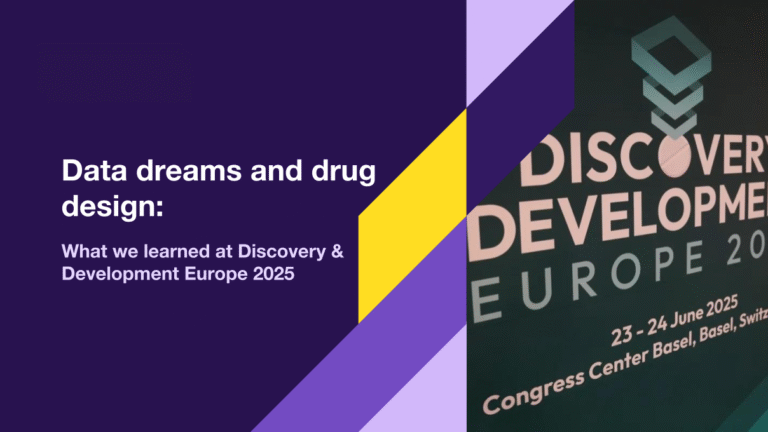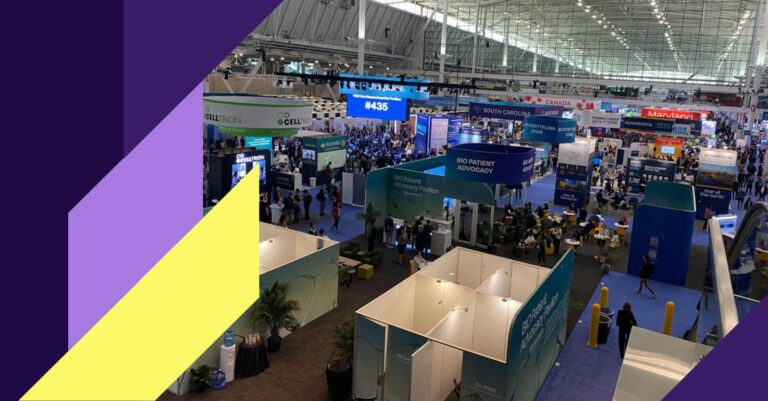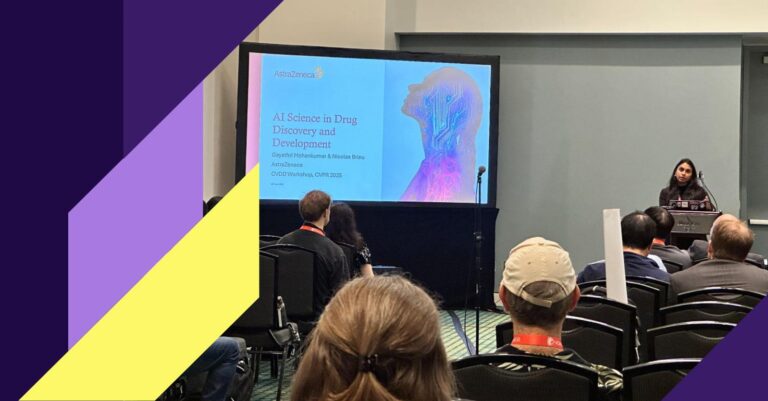Summary: With AI transforming the biotech and pharma industries, companies face a critical question: Should they build proprietary AI tools or adopt existing models to accelerate their research pipelines? In this blog post, we examine some of the considerations that go into deciding whether to buy or build AI tools for your specific needs.
AI-driven approaches are transforming biotech and pharma, offering powerful new ways to analyze cellular images, extract biological insights, and accelerate drug discovery and development. To stay competitive in the current market, implementing AI and other advanced computational approaches has become essential. However, with so many options available, many companies find themselves at a crossroads: is it worth investing in building proprietary AI tools, or is outsourcing computational capabilities the better option?
For data science teams and innovation leaders in pharma, deciding whether to buy or build AI-powered image analysis and phenotypic profiling tools depends on multiple factors, such as your company’s core competencies, time constraints and the level of customization required. Other major considerations include the complexity of image analysis, the ability to integrate other data modalities (if that’s of interest) and the expertise needed to develop cutting-edge computational models.
But let’s start with a little bit of history. When it comes to morphological profiling, the introduction of machine learning, computer vision and AI-driven image analysis features has supercharged the speed of discovery. Initially, high-throughput image analysis relied on semi-automated feature extraction tools such as CellProfiler (developed by the Broad Institute), which researchers still use today. However, tools like CellProfiler are limited in terms of throughput, reliability and predictive capabilities.

But let’s start with a little bit of history. When it comes to morphological profiling, the introduction of machine learning, computer vision and AI-driven image analysis features has supercharged the speed of discovery. Initially, high-throughput image analysis relied on semi-automated feature extraction tools such as CellProfiler (developed by the Broad Institute), which researchers still use today. However, tools like CellProfiler are limited in terms of throughput, reliability and predictive capabilities.
Around 2019–2020, deep learning and semi-supervised learning techniques emerged, with companies like Recursion Pharmaceuticals, Phenomic AI, and Ardigen leading the field. Instead of manually selecting features, these models infer relevant features directly from raw image data as well as incorporate additional capabilities such as multi-modal feature integration (including omics data and chemical structures) to provide a more holistic view of cellular responses and drug effects.
So, should you invest in building your own proprietary systems or take advantage of the existing ones? Let’s examine some of the pros and cons of developing in-house tools versus adopting existing solutions and customizing them to suit your needs.
Pre-trained AI models: Faster but less flexible?
One of the undeniable advantages of adopting existing solutions is faster deployment. These solutions require less manual configuration and offer ready-to-deploy functional capabilities. However, keep in mind that if your data requires specialized processing, out-of-the-box models may require some fine-tuning to align with internal data types and requirements.
Customization and compatibility are critical factors when deciding whether to build an in-house AI platform or leverage an external solution. Many biotech and pharma companies work with unique data modalities, such as specialized microscopy techniques (e.g., super-resolution imaging, live-cell tracking), non-standard omics data, or unique readouts (such as proprietary biochemical, electrophysiological, or high-dimensional spatial transcriptomics data), which require tailored AI architectures.
On the other hand, custom (in-house built) AI models offer greater flexibility in tuning model architecture, the ability to incorporate proprietary domain knowledge into the ML pipeline (e.g., reinforcement learning for chemical design, active learning to refine screening hits) and ensuring full control over data privacy and regulatory compliance.
Pre-trained models offer limited ability to adjust model hyperparameters to optimize for specific cell types, disease models or screening conditions. If a company has unique data relationships that pre-trained embeddings do not capture well, an in-house approach may be preferable. Additionally, adopting pre-trained models could limit their interpretability for niche biological mechanisms.
Custom AI tools: Worth the investment?
The biggest drawback of building your own custom models is that this process requires a substantial time and resource investment. While many companies may “dabble” in building AI models, it is important to keep in mind the extensive gap between prototype and robust, deployable platforms.
Training AI models for biology is data-intensive. Without diverse, well-labeled and AI-ready datasets, your models may lack generalizability. While there are public datasets available, using only open-source data may not be sufficient to create a robust and generalizable model and to distinguish your model capabilities from those of competitors. The process of generating large amounts of data in-house is extremely resource- and time-intensive. Even if companies generate a lot of data, that does not mean that the data quality is AI-ready.
In addition to the resource requirements of data generation, building your own in-house data analysis pipelines is computationally intensive and requires specialized expertise. Large-scale AI training initiatives require building a computational infrastructure including GPUs, ML pipelines and data engineering. Managing these resources as well as investing in AI talent adds up to significant investment.
Let’s not forget the resources required for security, compliance and ethical oversight. When dealing with both public and proprietary biological data requires regulatory compliance and expertise. Finally, integrating diverse data sources (imaging, chemistry, omics) into multi-modal ML pipelines presents its own set of challenges.
AI partnerships: A hybrid approach
A common approach among both small-scale and large biotech companies is to use pre-trained models for early-stage screening, then apply their own AI models to refine predictions on proprietary datasets. This combines scalability with custom optimization. Consider this option if these criteria apply to you:
- You want turnkey access to pre-trained AI models.
- You need expertise in multi-modal data fusion for better prediction of drug efficacy and safety.
- You lack the infrastructure for large-scale AI training.
- You require specific features to analyze your data.
- You prefer faster time-to-market.
Ardigen’s phenAID is a proprietary platform designed for biotech and pharma companies, offering end-to-end solutions with built-in AI models. phenAID integrates artificial intelligence, particularly computer vision and AI-chemistry, with molecular biology and medicinal chemistry to bridge the gap between cell imaging and small-molecule design.
While image-based ML remains foundational, phenAID also incorporates experimental chemistry data, protein structures, small molecules and video data from instrumented vivariums for preclinical research.
So, what’s the verdict?
If you’re a biotech or pharma organization weighing whether to build or buy AI tools for image analysis and phenotypic profiling, the decision depends on your strategic priorities, technical capabilities and long-term goals.
For many companies, the most practical approach lies somewhere in between. You might start by leveraging proven, pre-trained AI tools and enjoy the speed of deployment and ease of integration; then gradually invest in building custom components that reflect your proprietary data and scientific expertise. This staged approach allows you to balance immediate needs with long-term innovation.
When partnering with external AI providers, it’s crucial to choose one that offers not just off-the-shelf tools, but a modular, customizable platform that evolves with your needs. Ardigen’s phenAID platform is built with this flexibility in mind. Whether you need only specific capabilities—such as quality control, hit identification, or visualization—or a comprehensive end-to-end solution, phenAID can scale with you.
For smaller teams, phenAID allows you to get started quickly with AI-powered analysis while retaining the ability to tailor the platform to your unique data and research objectives. For larger organizations, the system can be fully integrated and deployed internally, giving you full control over performance, compliance and ongoing optimization.
In summary, you don’t have to choose between speed or customization. By aligning your AI strategy with your internal capabilities and long-term roadmap, you can start small, adapt over time and drive innovation on your terms. If you want to implement powerful solutions for phenotypic screening and high-throughput imaging data analysis, with the option to integrate multi-modal capabilities, reach out to one of our specialists to discuss the options that best suit your needs.




